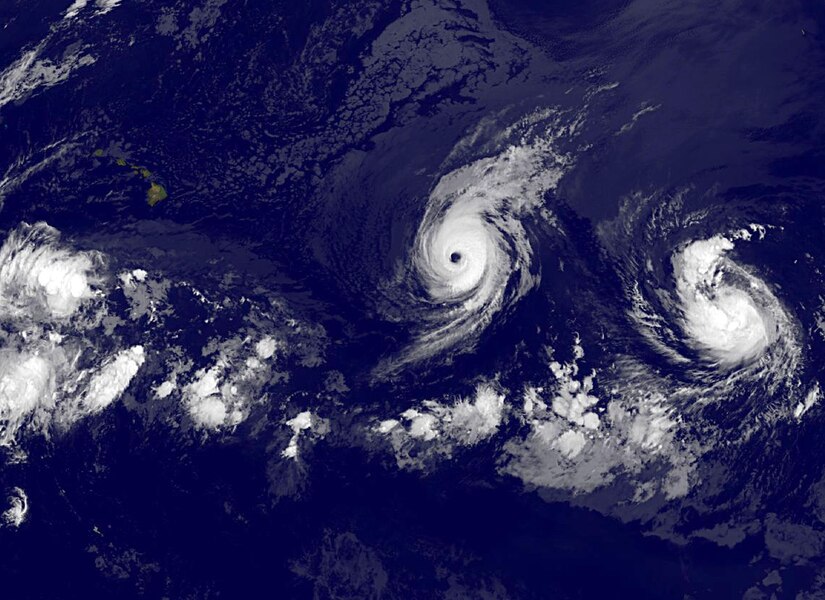Harvey, Irma, Jose, and Katia: the series of hurricanes that intensified the scientific debate

Photo AFP
AFP
Saturday, September 9, 2017 10:46
UPDATE
Saturday, September 9, 2017 10:46
Look at this article
The training rare, blow on blow, in the Atlantic ocean, four hurricanes of great power who spread death and devastation, has intensified the scientific debate on the strength and frequency of these extreme weather events.
- READ ALSO: hurricane Irma sweeps Cuba and pounced on the Florida deserted is preparing for the worst-case scenario
- READ ALSO: Irma: a path fatal
“We currently have three hurricanes in the Atlantic with winds of over 144 km/h, which is only the fourth time that this occurs in the annals”, relèvait Phil Klotzbach, a scientist with the department of atmospheric sciences of Colorado State University on Friday.
The power of hurricanes is measured by the scale of Saffir-Simpson scale, which goes from category 1, the weakest, to category 5 hurricanes especially destructive.
Irma, a gigantic depression that is the size of Texas, has just hit Cuba and heads on the west coast of Florida. It oscillates between category 4 and 5 with sustained winds of 240 to 295 km/h. Jose ahead in the wake of Irma, but a little further north is a Category 4 hurricane, according to the data of the american Center of hurricanes (NHC).
Katia, a long time a hurricane was eventually downgraded to tropical storm over Mexico. 15 days ago the south-eastern part of Texas has been literally drowned in the cloudburst of Harvey.
When Irma hit Florida on Sunday morning this will be the first time that two hurricanes of category 4 or more batter the United States during the same season which runs from 1 June to 30 November, September being the month most active historically.
But is it something new ?
Active Cycle since 1995
To Gabriel Vecchi, a professor of geophysics at the University of Princeton (New Jersey), this intense hurricane activity is likely due to the fact that “we are since 1995 in an active cycle in the Atlantic,” even if all these years have not experienced high activity.
Thus the period of 2013 to 2016 has been very quiet which can be explained in part by the presence of the equatorial current of the Pacific El Nino.
This current periodic hot product, a phenomenon of wind shear, which defuses the formation of hurricanes.
The decades 1960, 1970 and 1980 were marked by a relatively low activity of the hurricanes during the season before a change from the mid-1990s, explains to the AFP, the professor Vecchi.
But, he noted, there is a debate among scientists about the origins of this change is attributed often to a reduction of pollution in the atmosphere above the Atlantic.
After the Second world War, there has been a major industrial development in the United States and Europe, causing a severe pollution with increasing sulphate aerosols that block the sun’s rays.
This has cooled the ocean and renders the conditions less conducive to the formation of hurricanes are fed by heat and humidity.
Alternating natural
With the implementation of measures to control this pollution, such as the “Clean Air Act” in the United States, the pollution has decreased since 1970 and this allowed the sun to warm up more in the waters of the Atlantic.
The global warming resulting from increasing emissions of greenhouse gases related to human activities in recent decades has also contributed, said professor Vecchi.
But he adds, other scientists believe that there is a natural alternation of the cycles of active and quiet seasons of hurricanes as a function of the variation of temperatures in the Atlantic ocean resulting current is called “oscillation atlantic multidécennale” which extends over several decades.
“Currently, the big debate in the scientific community focuses on the fact of whether this warming is due to ocean current or to the reduction of atmospheric pollution,” says professor Vecchi.
“I think …that there are indications suggesting that these two factors have contributed to the cooling since they could not be separated “, he says.
For the climatologist Michael Mann of penn State University, the strong increase in temperatures of ocean waters in recent years is the signature of global warming, which contributes to the intensity of these storms.
“In recent years, so that the surface temperatures of the oceans have reached record levels, we have seen hurricanes more intense, measured by the speed of the winds in the northern and southern hemispheres, the Pacific and now in the Atlantic with Irma “, he explained in an email to AFP.








